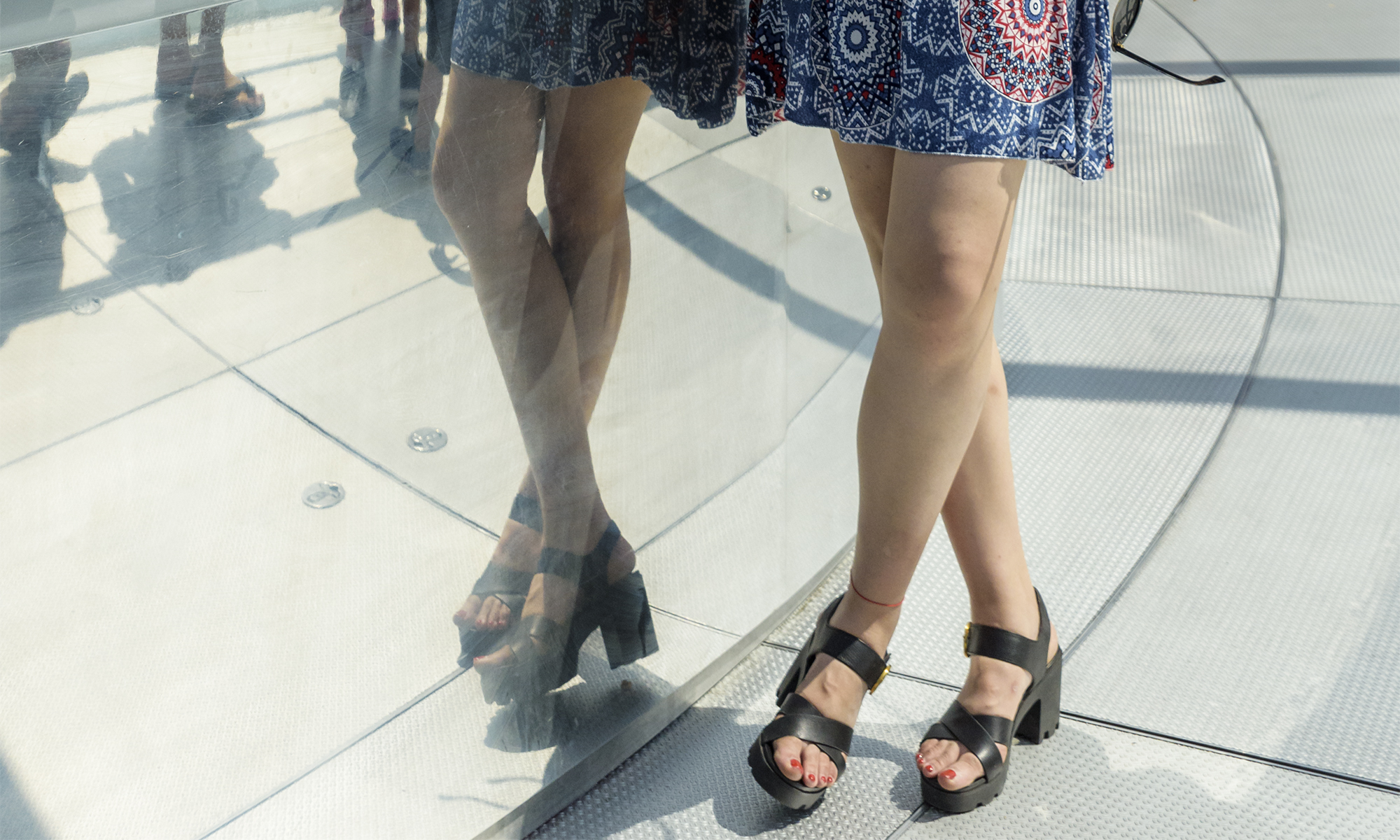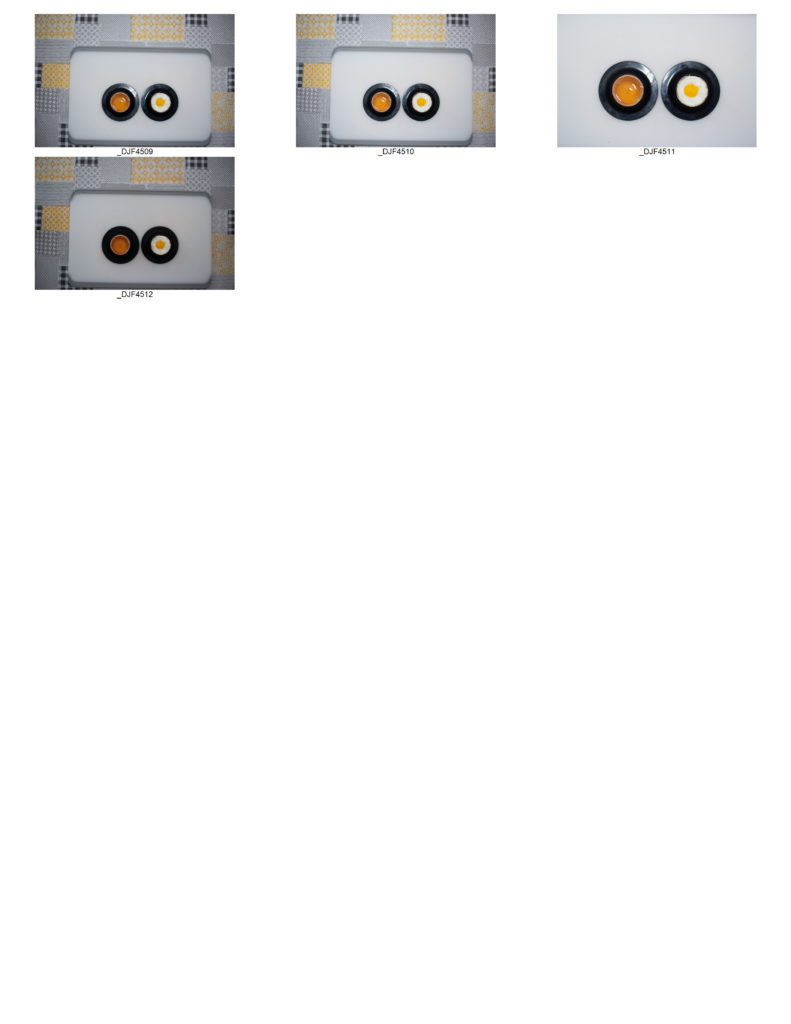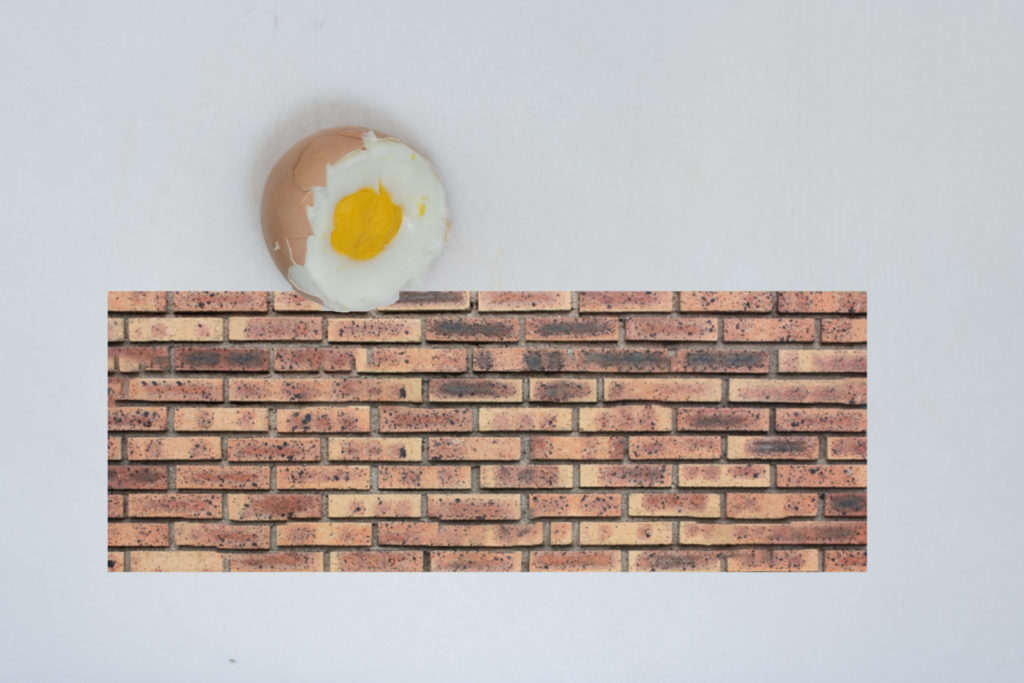Part 2 – Project 2 Image and text – Exercise 2.
Exercise
The aim of this exercise (and Assignment Two) is to encourage you to develop metaphorical and visceral interpretations rather than obvious and literal ones, to give a sense of something rather than a record of it..
Choose a poem that resonates with you then interpret it through photographs. Don’t attempt to describe the poem but instead give a sense of the feeling of the poem and the essence it exudes.
Start by reading the poem a few times (perhaps aloud) and making a note of the feelings and ideas it promotes, how you respond to it, what it means to you and the mental images it raises in your mind. Next, think about how you’re going to interpret this visually and note down your ideas in your learning log.
You may choose to develop this idea into creating a short series of images reflecting your personal response to the poem (or another poem). Write some reflective notes about how you would move the above exercise on.
The number of pictures you choose to produce for the exercises and assignments in this course, including this one, is up to you. Try to keep in mind the following tips for knowing when you have done enough/not done enough:
• Are the images repeating themselves? Are there three versions of the same picture or example? Can you take two out?
• Does each image give a different point of view or emphasise a point you want to make?
• Do the images sit well together visually?
• Have you given the viewer enough information? Would another picture help?
Metaphor – “a figure of speech in which a word or phrase is applied to an object or action to which it is not literally applicable.”
Viceral – “Relating to deep inward feelings rather than to the intellect.‘the voters’ visceral fear of change”.
I understand this to mean that I am to create images that represent the feelings I experience from the poem rather than try to create literal images of things mentioned in it.
For this exercise, rather than a poem I have chosen the words from a song, which I consider a poem set to music. The extract below is the part that am I really connecting with right now:
Defying Gravity from the musical wicked
Something has changed within me
Something is not the same
I’m through with playing by the rules
Of someone else’s game
Too late for second guessing
Too late to go back to sleep
It’s time to trust my instincts
Close my eyes and leap
It’s time to try
Defying gravity
I think I’ll try
Defying gravity
And you can’t pull me down
I’m through accepting limits
‘Cause someone says they’re so
Some things I cannot change
But till I try, I’ll never know
Too long I’ve been afraid of
Losing love I guess I’ve lost
Well, if that’s love
It comes at much too high a cost
Songwriters: STEPHEN LAWRENCE SCHWARTZ

“Something has changed within me” . . .

“I’m through with playing by the rules of someone else’s game”
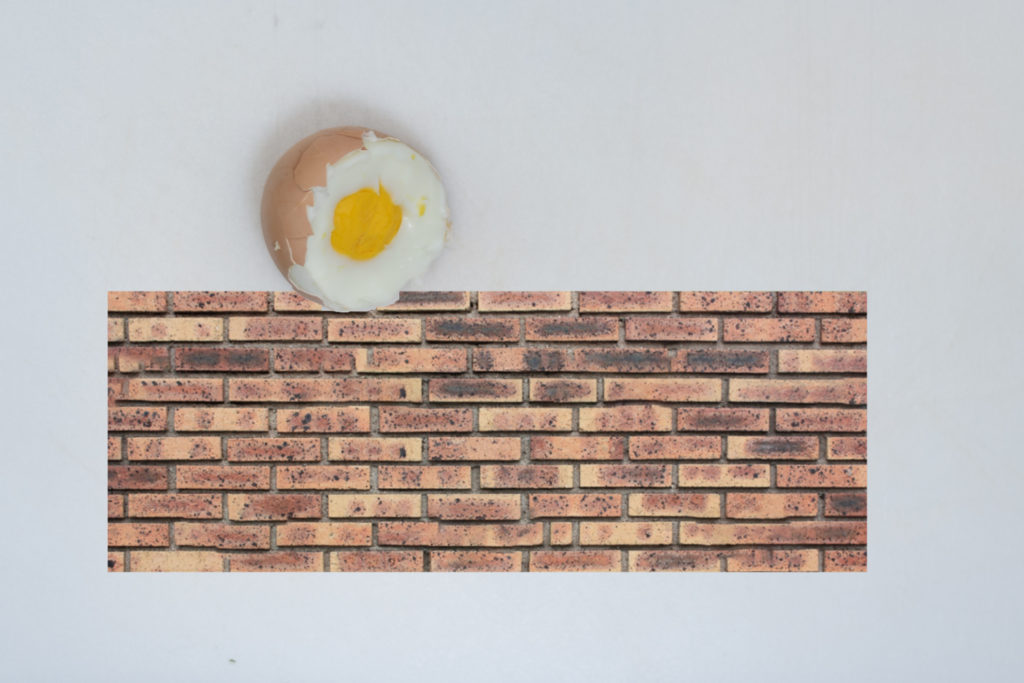
“Too long I’ve been afraid of
Losing”

“I think I’ll try
Defying gravity
And you can’t pull me down”
the contact sheets for this set can be seen here
This project was actually more fun than I thought it would be.
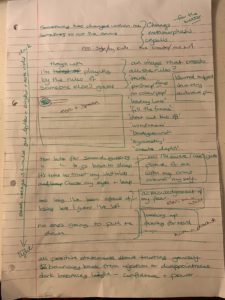
With this exercise, I started by selecting the specific lines in the song that I connected with and thought about how I could represent them. I think I picked the phrases that had a visceral meaning for me.
I chose the egg because it lent itself very well to the idea of change within, which I could represent in the images.
I decided that the images should progress from dark to light to show the change in mood. The images are deliberately surreal as I wanted them to be representations rather than ‘real’ images.
The images of the egg were taken on a white board with a camera on a tripod overhead. I lit it what an LED light. I then added an overlay and adjusted the brightness in each of the images,
The images are very much a set. Having done the planning and having the ideas before I started the photography it actually made it quite quick to produce. I was also able to adapt as I produced the image and compare them with each other as I made them, which helped with the overall feel of the set.
Reading and Links
I came across this article when researching Robert Frank’s Americans
Robert Frank – The American – https://www.smithsonianmag.com/videos/category/arts-culture/inside-robert-franks-the-americans/
Experimental Relationship https://www.lensculture.com/articles/yijun-liao-experimental-relationship-2
https://www.lensculture.com/articles/oleg-tolstoy-who-s-driving-tokyo
https://www.lensculture.com/2018-lensculture-street-photography-award-winners
Postmodernism / Modernism
Part 2 – Project 1 – Exercise
Exercise
• How does Briony Campbell’s The Dad Project compare with Country Doctor?
• What do you think she means by ‘an ending without an ending’? Make some notes in your learning log.
To read reviews follow links below:
At first you think that Briony’s project is personal and full of emotion, reading the story that goes alongside it, really engenders some of that raw emotion in the view as well. The soft tones and shades add to dreamy almost unreal aura they produce. Whereas, you when you view’s smith’s images they are following a stranger around doing his job and you would think they would be dispassionate. However, that’s not how they come across, the compositions and use of high contrast really give a sense of drama and factual.
However, having read Smith’s bio, it appears that these images were taken only a year after he himself had recovered from a major injury sustained whilst acting as a war correspondent during the 2nd World War. Putting them into the context of his own experiences and this may be why they are full of emotion and candour.
Briony Campbell says that the work is ‘an ending without an ending’? – I believe she means that because this is personal about her life that it can’t / won’t be packed away in box some place once the project is finished. It will always be with her and help her to remember her dad. Personally, I think once you’ve invested in a project it always very hard to draw a line under it and never think about again!
W. Eugene Smith – ‘Country Doctor’
W. Eugene Smith was an American photojournalist.
His work the ‘Country Doctor’ was a ‘fly on wall’ documentary of the day to day life and work of a general practitioner named Dr. Ernest Ceriani.
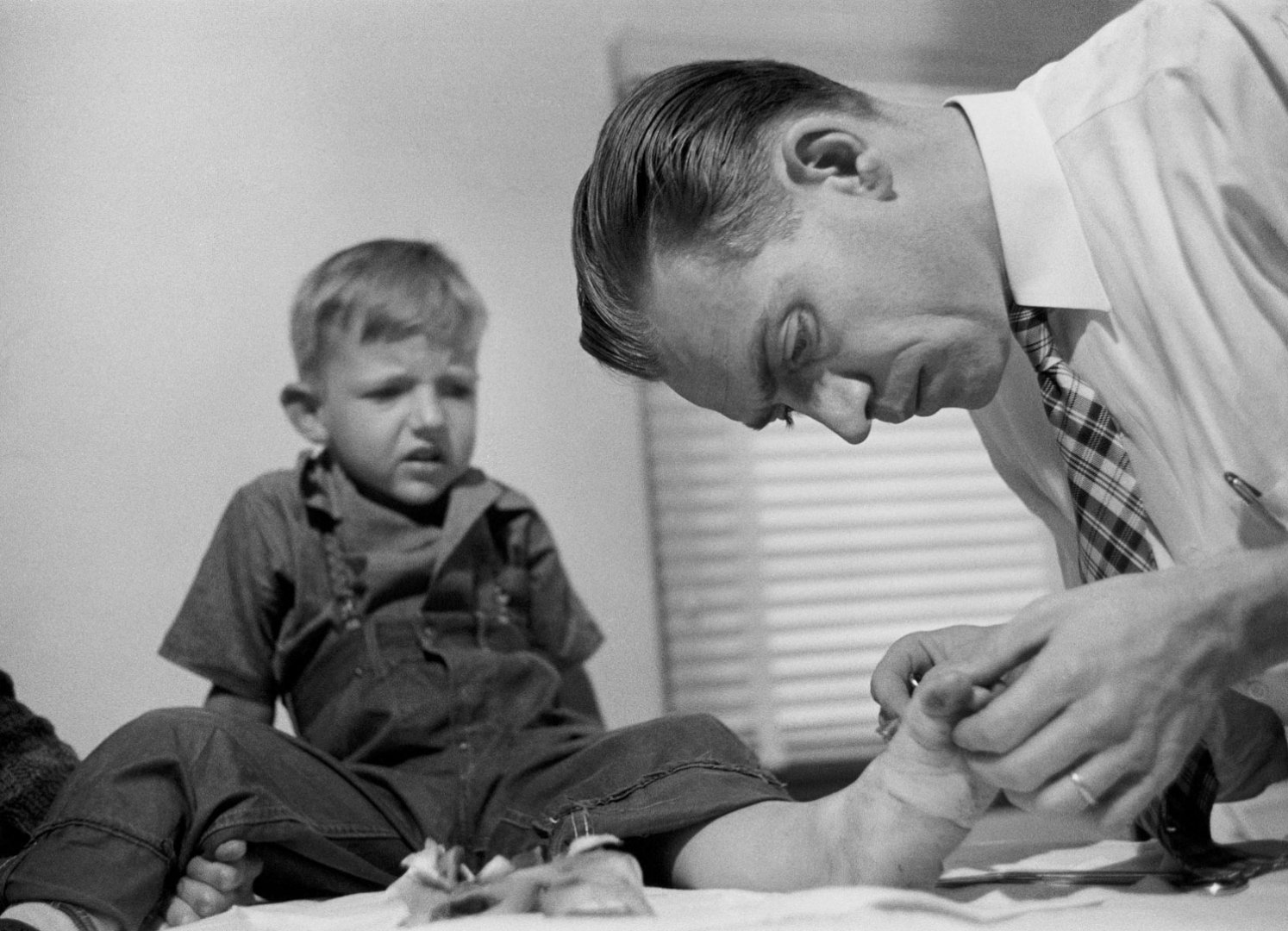
Smith’s images although documentary also capture the emotion of the scene by his composition and angles. Taken in 1948, this is only a few years after being a war correspondent where he focused on taken images of the suffering of the people rather than the soldiers and battles. He himself was injured and had to undergo a lot of surgery so it is perhaps these to events that led him to concentrate on the life of a doctor.
source: – Art Blart – https://artblart.com/tag/dr-ernest-ceriani-following-the-loss-of-a-mother-and-child-during-childbirth/ [accessed 04.01.2019]
Briony Campbell – The Dad Project
Briony Campbell‘s Essay written in 2011, 2 years after her father’s death gives a more reflective and object view of her ‘Dad Project’, than her first draft.
The Dad Project by Briony Campbell, Nov 2011 [accessed 01.01.2019
The project is personal and emotional and although she found it difficult to do at the time, it has become very intrinsic to her and her work. She has been struck by how sharing her work has helped her grieve but also the impact it has on others.

But after the terminal diagnosis, it served to comfort my mourning. by Briony Campbell
I understand her comment about remembering that new viewers to the work are just experiencing this impact and she must remember this in responding to their reactions.
She says that the work is ‘an ending without an ending’? – I believe she means that because this is personal about her life that it can’t / won’t be packed away in box some place once the project is finished. It will always be with her and help her to remember her dad.
My own reaction was very raw, my own father passed away 4 years ago and this brought back many memories for me. I would love to have such images of him. It is a bit of a taboo in our country to photograph the dying process of our loved ones, but it is also a part of life, we photograph birth and weddings, why not death. Whilst I don’t like having my photo taken, I have come to realise that how important they become when someone is no longer here, but for me, like Briony, I want to capture the real person, not the person in wedding and christening photos.
Another photographer who has used grief for a body of work which I much admire is Kirsty Mitchell. The work and subsequent book is called Wonderland. She created this a tribute to her mother who had died from cancer. It took her six years. Her website here, tells the story

For me both of these stories are personal and thought provoking. The accompanying narrative in both cases is well written and in some cases quite raw. I think this helps the viewer really engage, understand and relate to subject matter and set of images.
